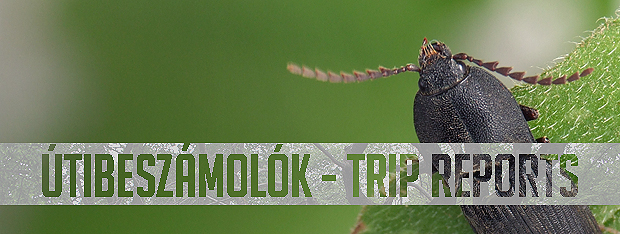
TRIP REPORTS
VI.24-VII.7.2012
As the summer has come, we
continued our beetle collector adventures in

Our first destination was in the Florina prefecture, only twenty
kilometres from the border. This is a very wet area, with lush forests
and
several streams.
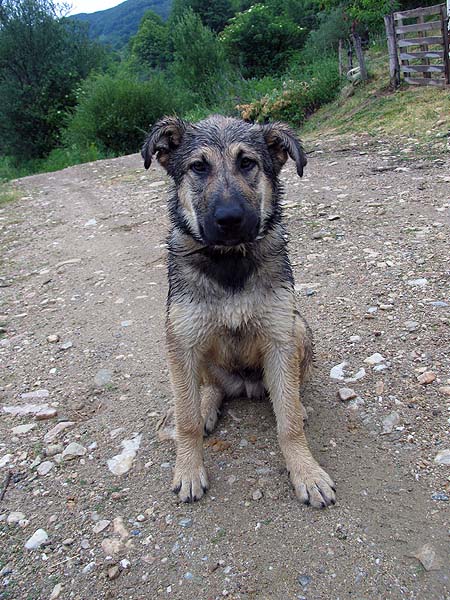
We
set up our tents at


The
long journey made us exhausted, but before sleeping we took a short
trip in the forest with torches, searching for nocturnal beetles on the
ground.

The
first beetle was a nice wingless Dima
species. Previously no Dima were
known from this mountain, but this year my Italian colleague, Giuseppe
Platia,
described a new species from this prefecture .

A
bigger (

Accanthopus reitteri
(Brenske, 1884) - this darkling beetle lives in

Nosodomodes
diabolicus (Schaufuss, 1862) –
cylindrical bark beetle, reminiscent of a small piece of fungusy wood.

On the next afternoon we found a clearing full of
umbellifers,
which attracted several beetle species.



Female of Anostirus
binaghii Platia et Gudenzi, 2006.

For
my friends, one of the most interesting species occurred in the
afternoon. Leptorhabdium illyricum (Kraatz, 1870 is a
really popular "phantom" longhorn. We were really lucky to find this
nice clearing – with the help of one of our kind French
colleagues – and the umbels
of chervils (Chaerophyllum sp.). I
will never forget the magical hours, when these amazing longhorns were
flying
around the plants.
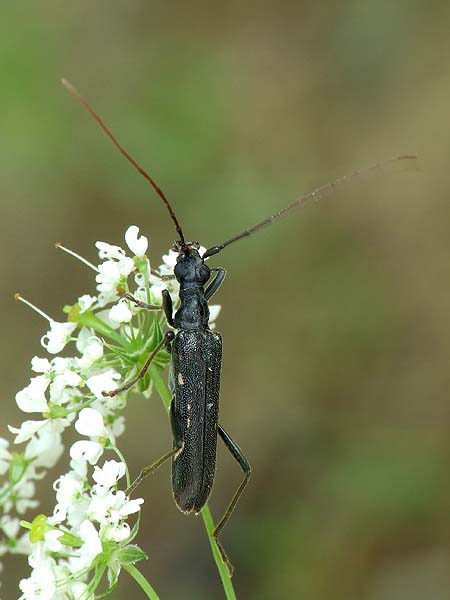


A monster – this
huge ground beetle Procerus gigas
Creutzer, 1799 walked on the trail in front of

Phaenotherion
ganglbaueri Apfelbeck, 1918 –
fungus
weevil, sifted from leaf litter of beech. In the


Next morning: near to a sky centre, on
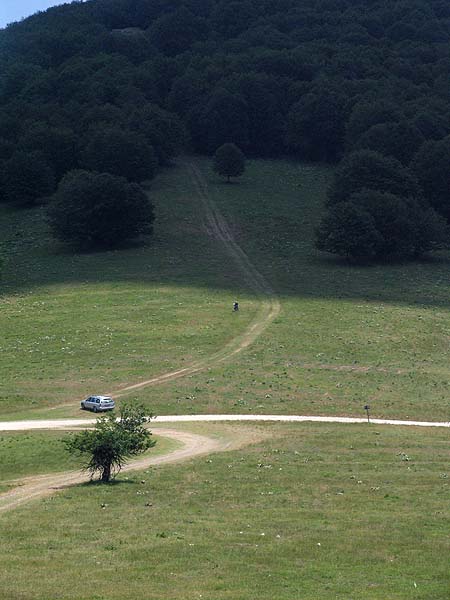
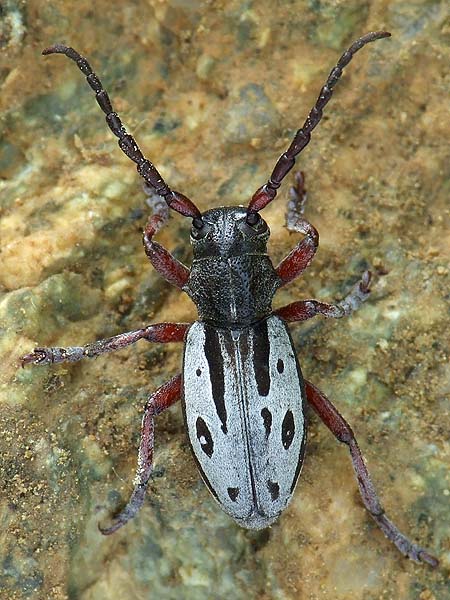
Old and
battered specimens
of Dorcadion
ljubetense Pic, 1909 were found after
long search.
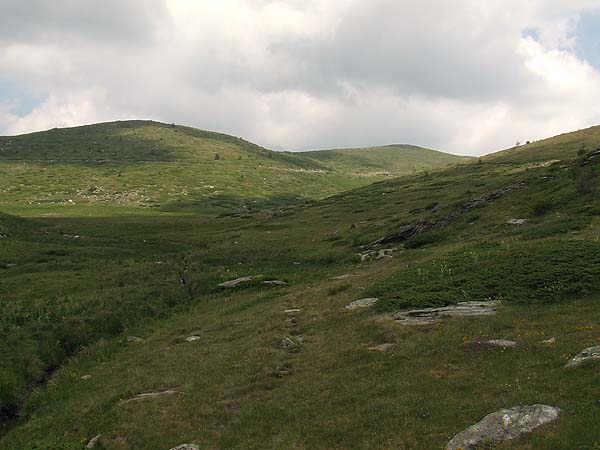
In the afternoon we headed to the Mountain
Kaimaktsalan.
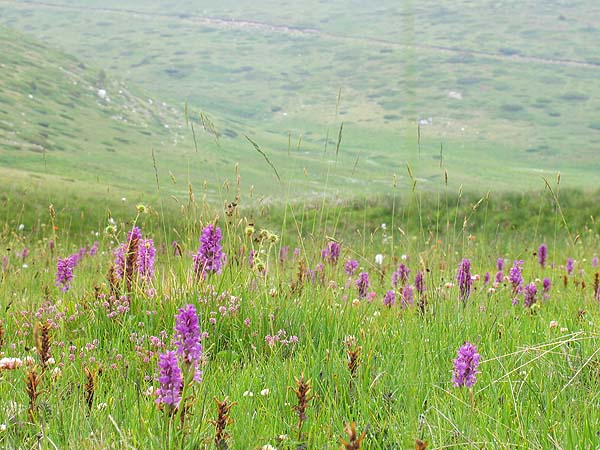

A few really worn specimens of Dorcadion kaimakcalanum
Jurecek, 1929 were found at

Cold and fresh streams flow across the mountain
meadows.
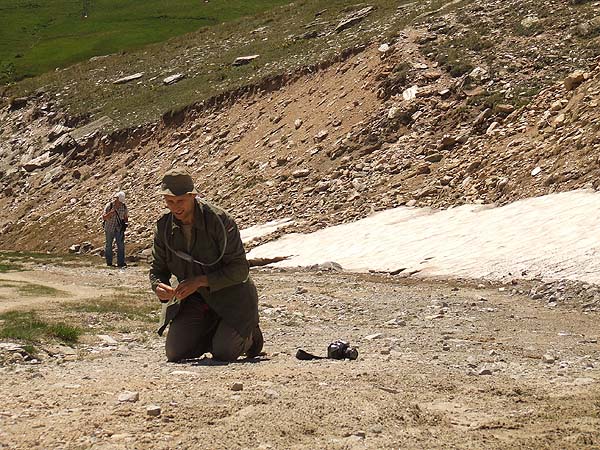
Just below the top, at

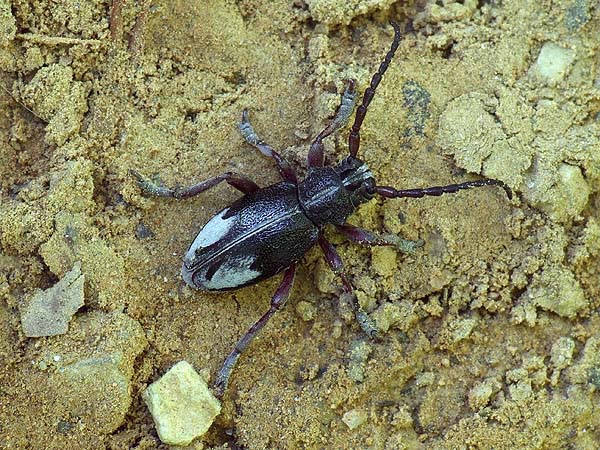
Dorcadion
purkynei Heyrovsky, 1925. It was the peak
of activity period for this handsome longhorn.
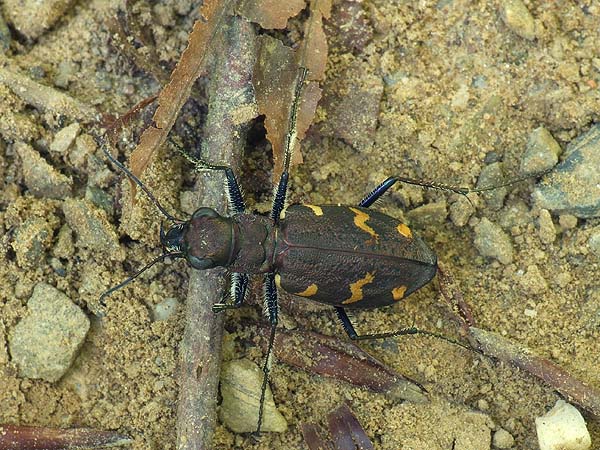
Huge, rough surfaced tiger beetles were running on the
bare ground. Cicindela sylvatica
fasciatopunctata
Germar, 1844.

Selatosomus
amplicollis (Germar, 1843).
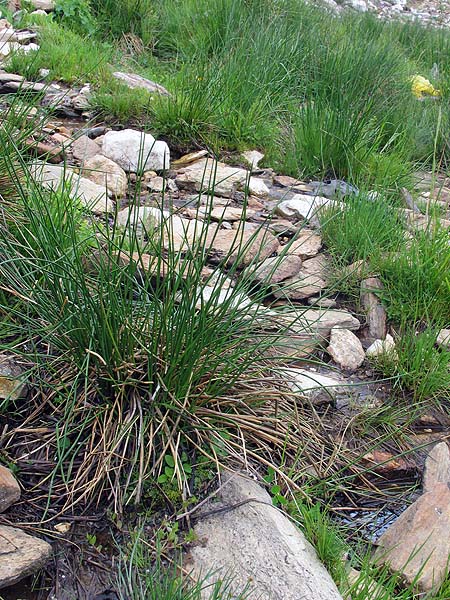
We collected small click beetles from beneath stones,
near to a stream.
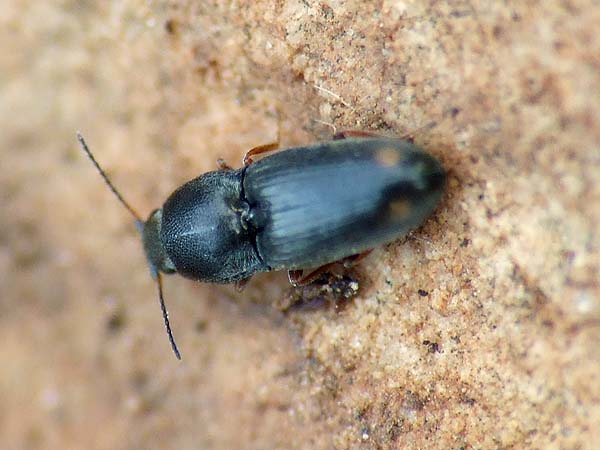
Zorochros
sp.
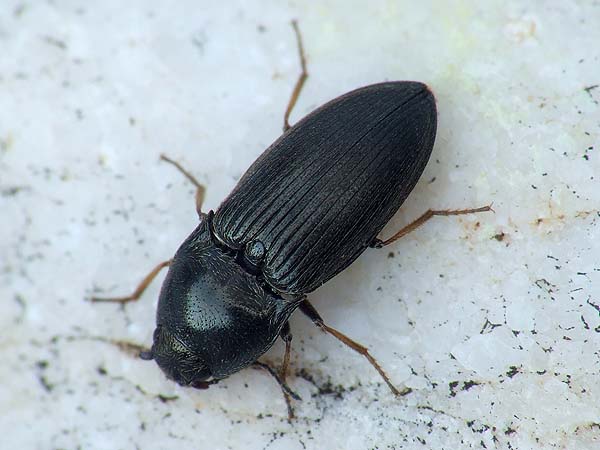
Hypnoidus
riparius
(Fabricius, 1782).

Ctenicera cuprea
(Fabricius, 1775), from
vegetation.

We found a warm patch of macchia at lower altitude for
the night.
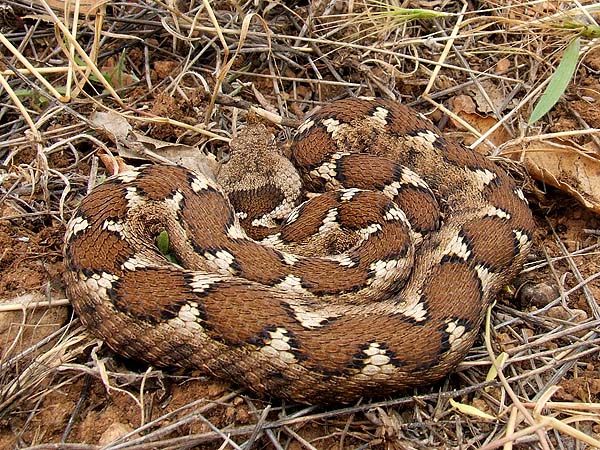
Morning surprise under the tent: Vipera
ammodytes meridionalis Boulenger, 1903. We were lucky to
avoid its bite, because it has the most potent venom among the European
snakes.
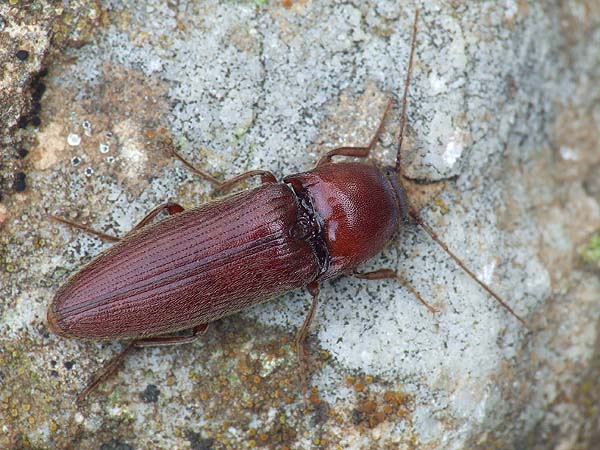
Melanotus
fusciceps Gyllenhal, 1817 – collected
at light.
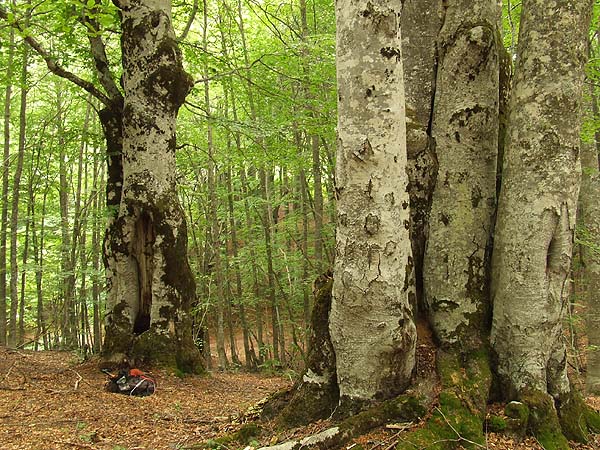
Next stop in a beech forest. I tried to collect another Dima species, but it was a bit late for these cold-loving click beetles.

We found only larvae, probably those of D. riesei Platia, 2010.

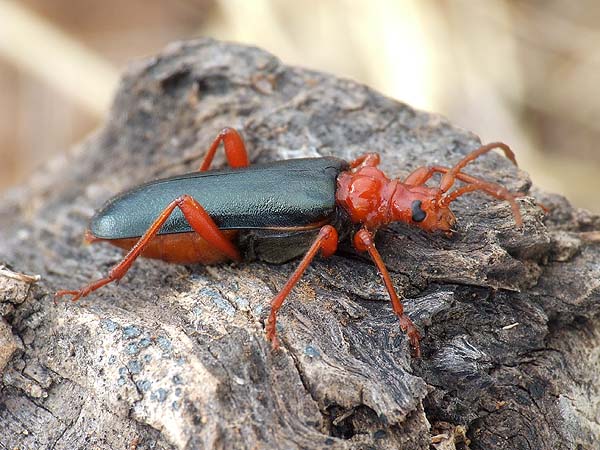
Rhamnusium
bicolor (Schrank, 1781).
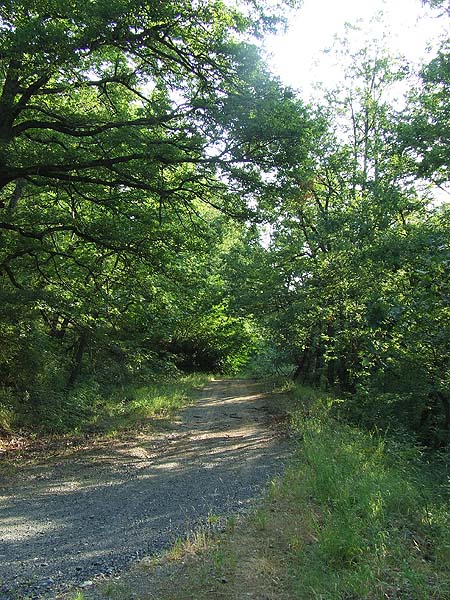
We headed south, and visited the Ossa Mountain, as we
did it last year.
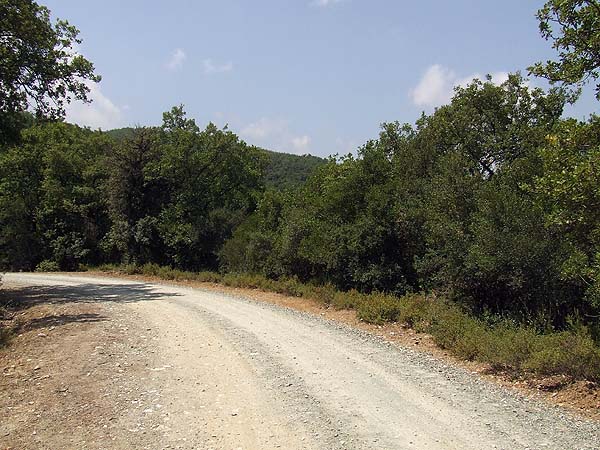
We spent this night at lower areas, in an oak grove.

Galeodes
graecus C. L. Koch, 1842. I was not
informed that sun spiders (Solifugae) occur in
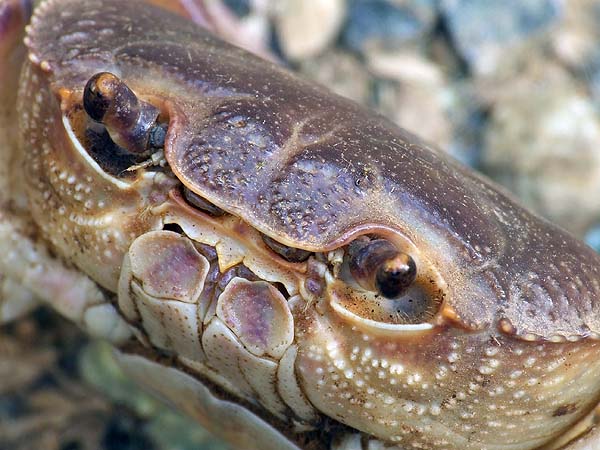
Freshwater
crab, probably Potamon
fluviatile Herbst, 1758.

Niphona
picticornis Mulsant, 1839, beaten from
oak.

Isotomus
speciosus (Schneider, 1787), from
woodstack.
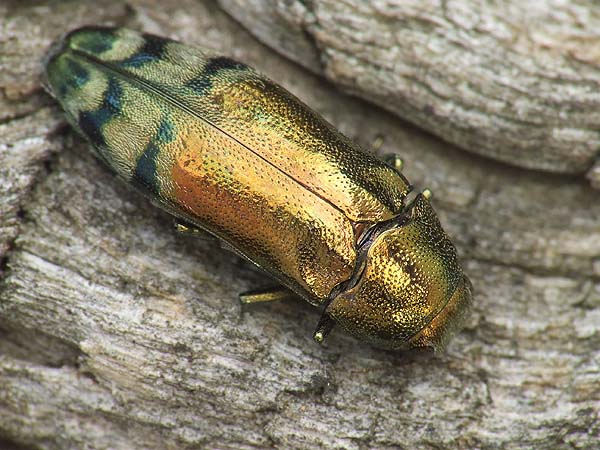
Coraebus
fasciatus
(Villers, 1789), netted from the canopy of
oaks.
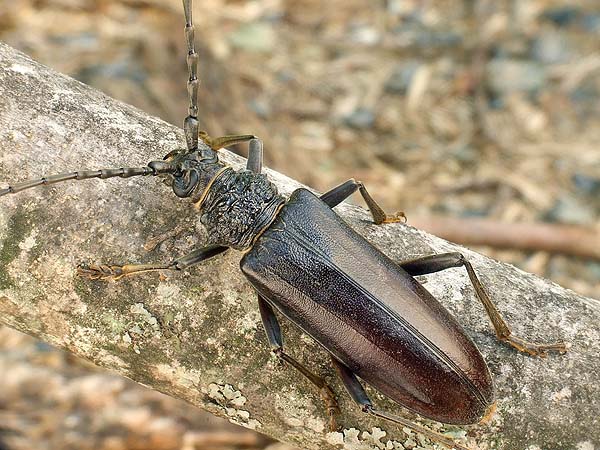
Cerambyx
welensii Küster, 1846, collected by
our light-trap.
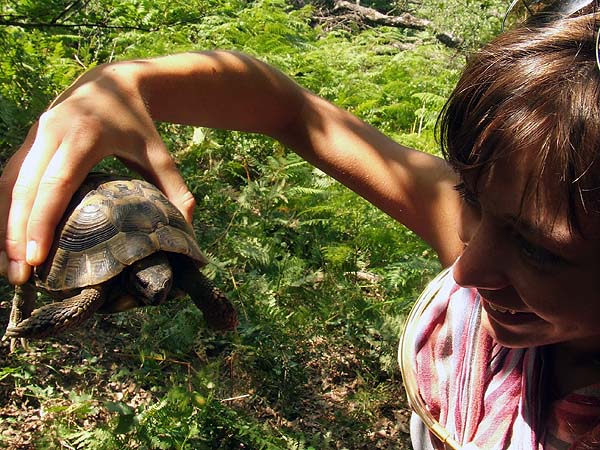
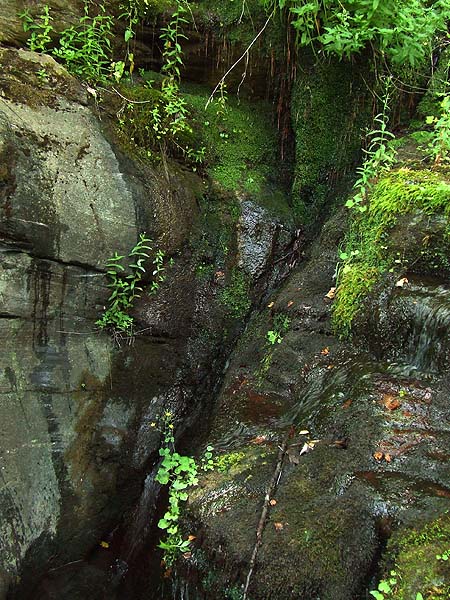
In the heat, cool streams and waterfalls like this
provided open air bathrooms for us.
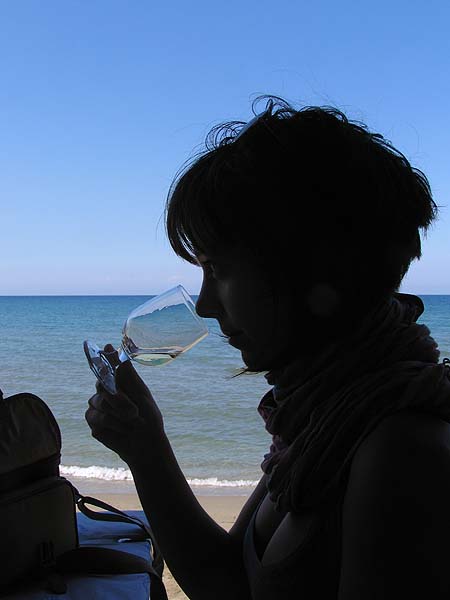
Finally, we visited the sea. We had a cheap and
delicious lunch at a nearby tavern, and the warm sea was terrific.
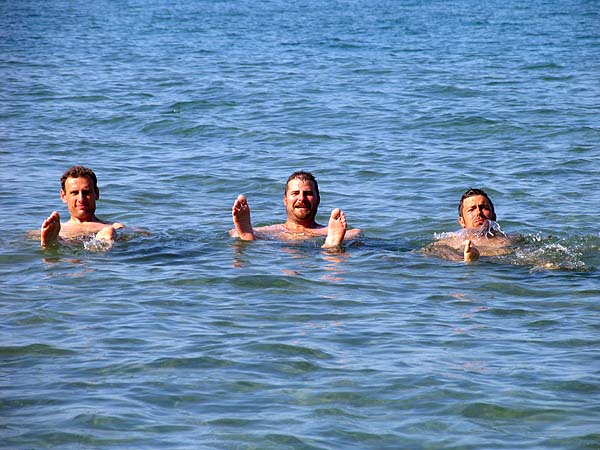
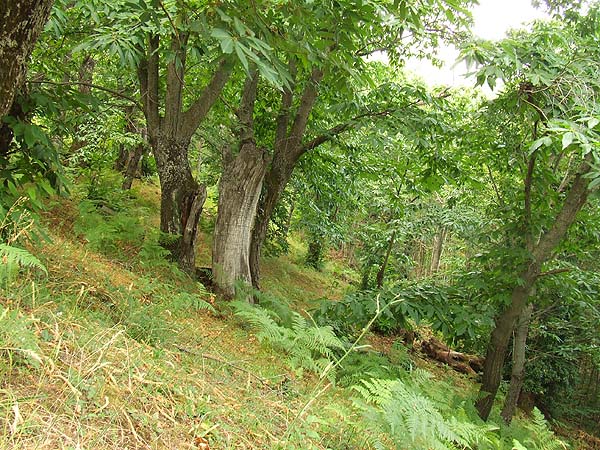
In the afternoon, we visited our favourite chestnut
grove of Ossa.
In the mixed forest of this part of the mountain,
several beetles were found.

Osmoderma
lassallei Baraud
et Tauzin,
1991 – hermit beetle.
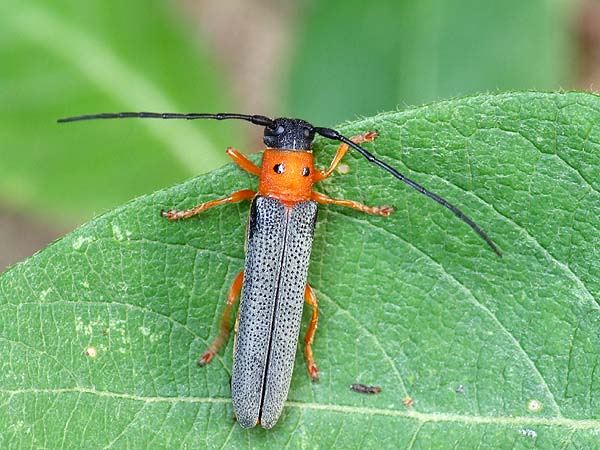
Oberea
oculata (Linné, 1758).
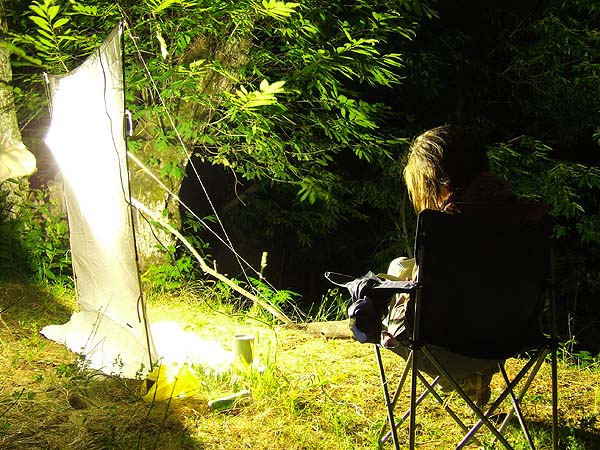
Collecting and reading at light.
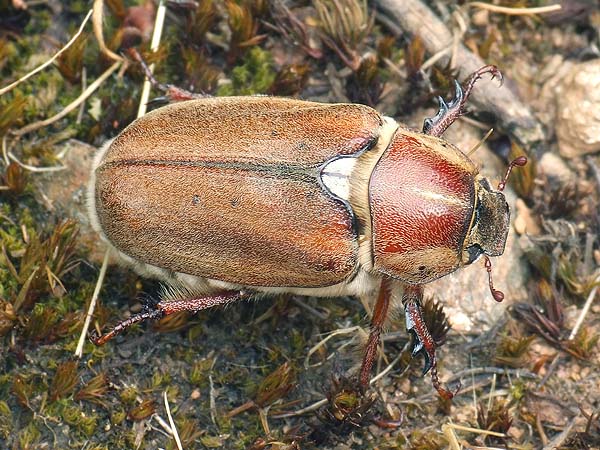
Anoxia villosa
(Fabricius, 1781)
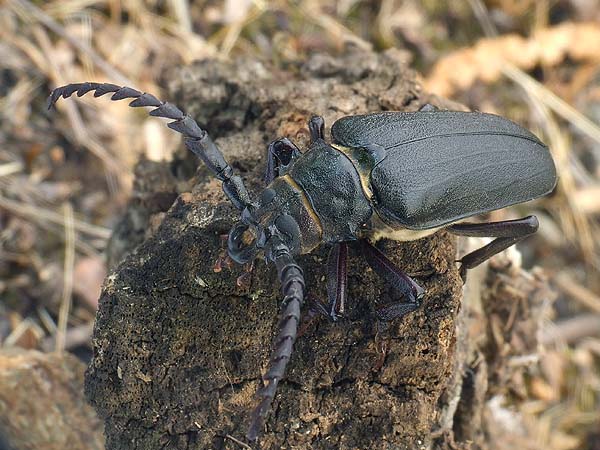
Prionus corarius
(Linnaeus, 1758).

Athous sp.

After installing our wine traps in the forest, we
headed south again to visit the town of
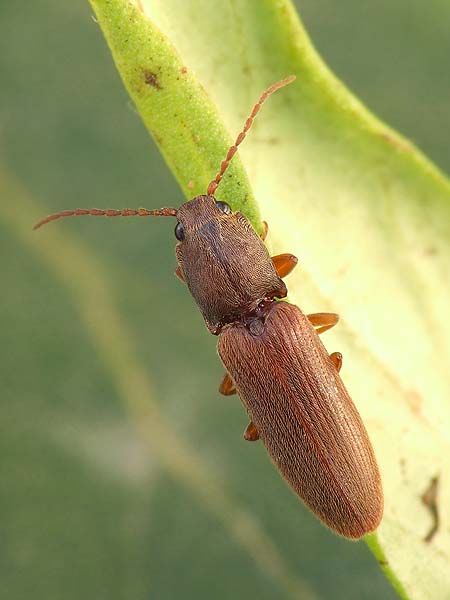
Athous
sp. from
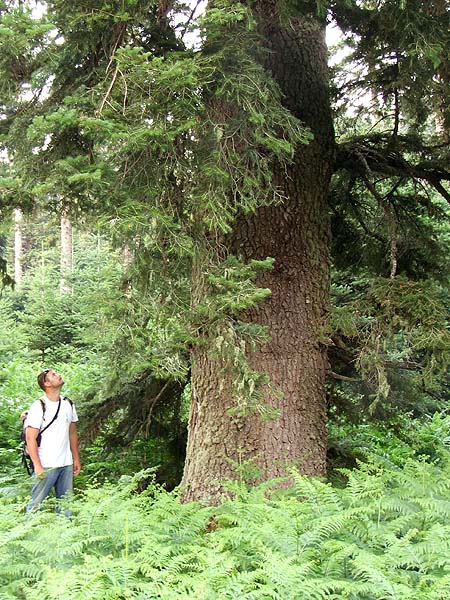
In the forests of the southern Pindos, giant spruce
trees stand silently.
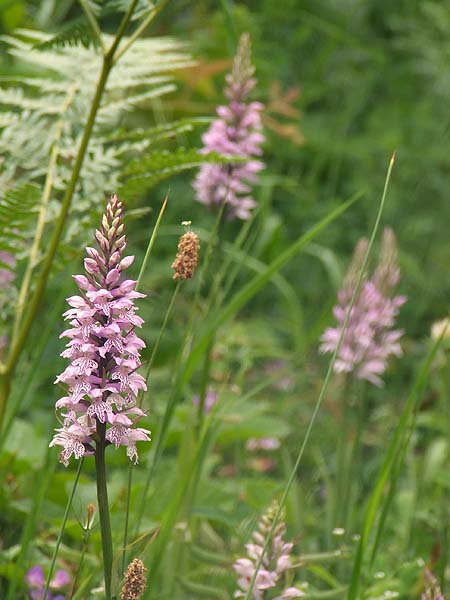
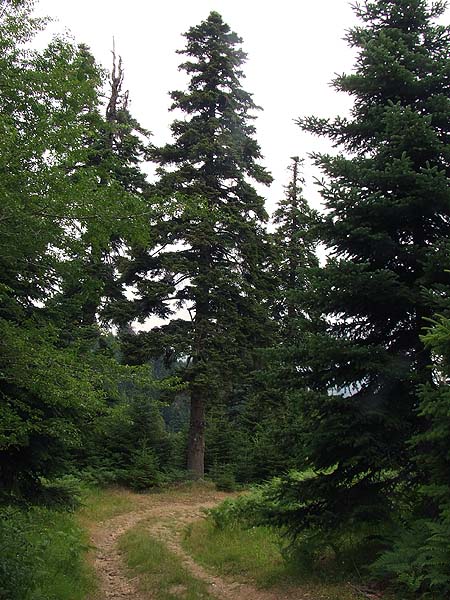
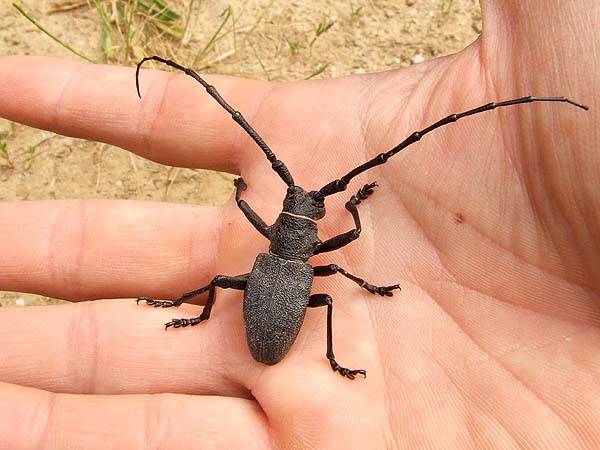
Morimus asper
Sulzer, 1776.
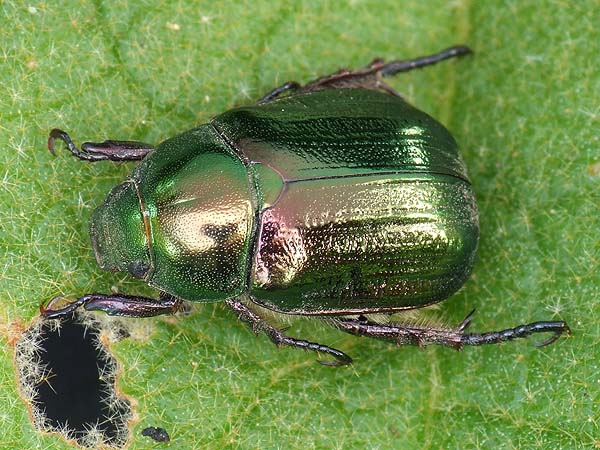
Mimela
aurata (Fabricius 1801).
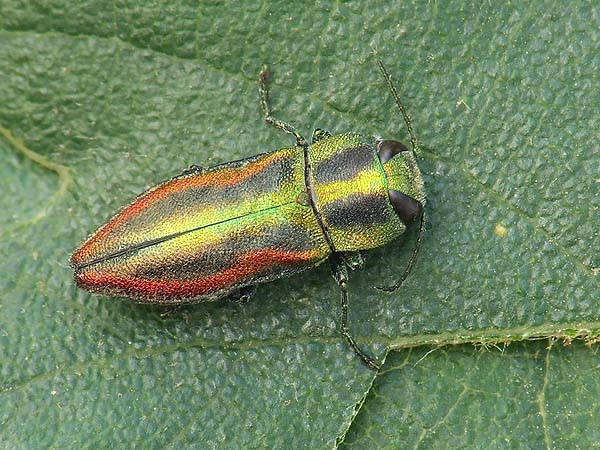
Anthaxia vittula
Kiesenwetter, 1857.


Stictoleptura
erythroptera (Hagenbach, 1822).
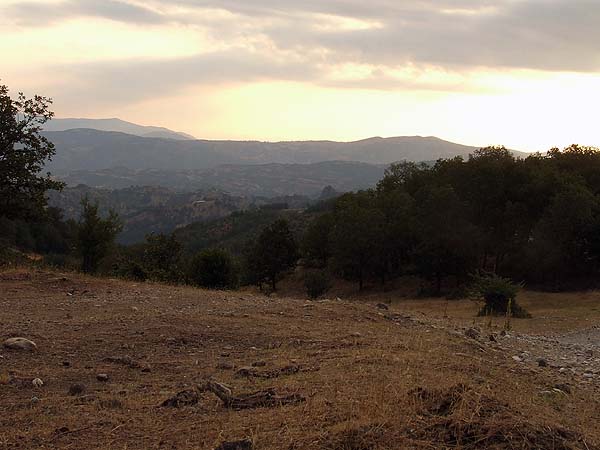
Although the southern Pindos was beautiful, not many
beetles were seen, so next day we visited the oak groves of Vlahava,
near to
the famous Meteoras.
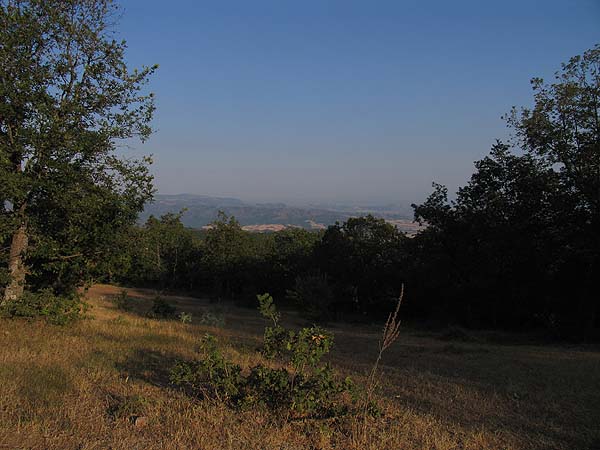
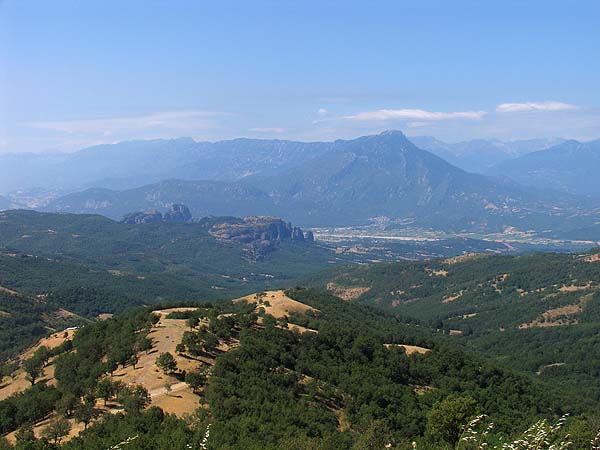

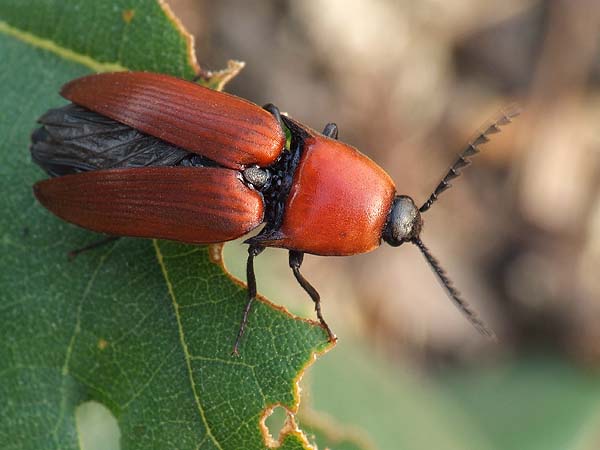
Elater
ferrugineus Linnaeus, 1758 netted from a
sunny oak.
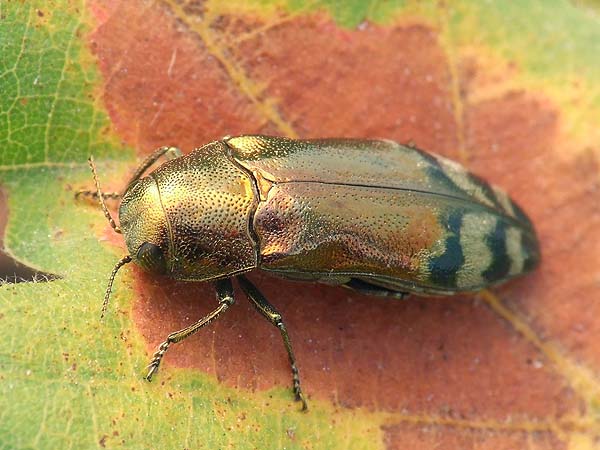
Coraebus
fasciatus
(Villers, 1789) netted in considerable
numbers from the canopy of
oaks.

Bradyporus dasypus (Illiger,
1800). A huge and
calm wingless bush cricket. In the 1860s this mouse-sized insect also
inhabited
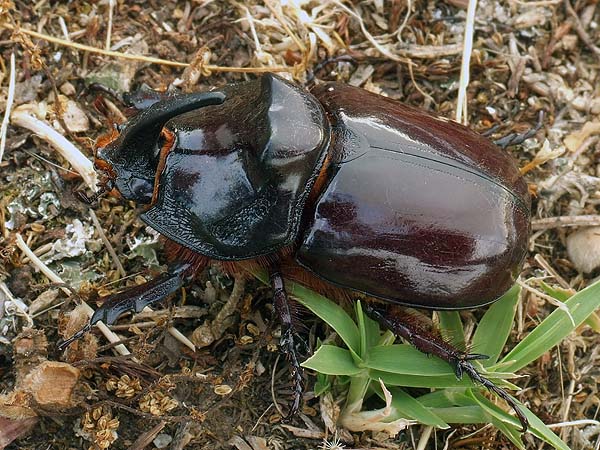
Oryctes nasicornis
(Linnaeus, 1758) collected at light.

In the morning eight highly agitated shepherd dogs
attacked our campsite. With axes in our hands, we had to wait almost
one hour,
until they left us.
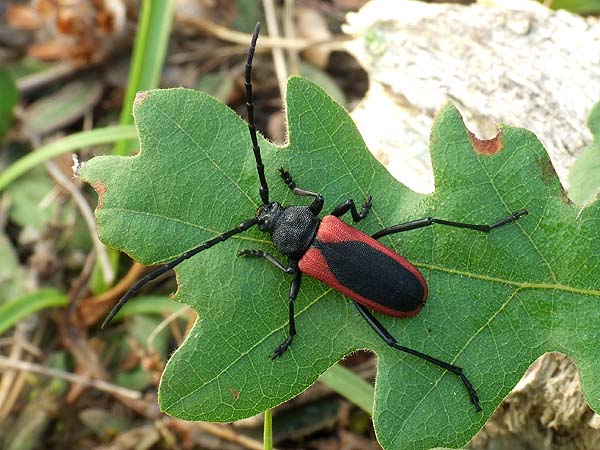
Purpuricenus kaehleri (Linnaeus,
1758).

Hermit
beetles were crawling on relatively
young oaks. Osmoderma lassallei Baraud et Tauzin, 1991.

Cerambyx
welensii Küster, 1846 from a dying
tree.

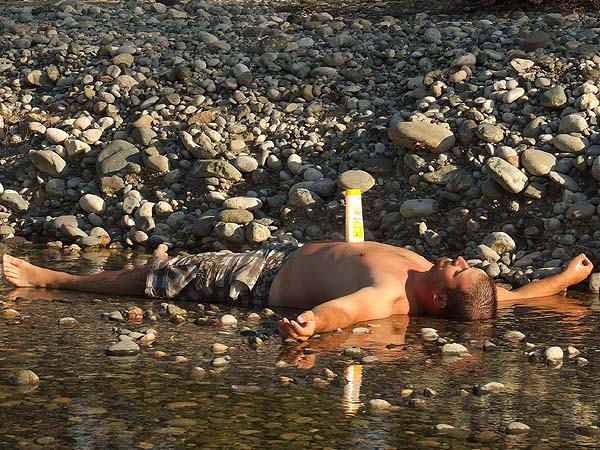
We headed to Anixi, one of our well-known places. We
were shocked seeing that the nearby river, where we planned to swim,
was almost
dried out, and angry dogs challenged us.
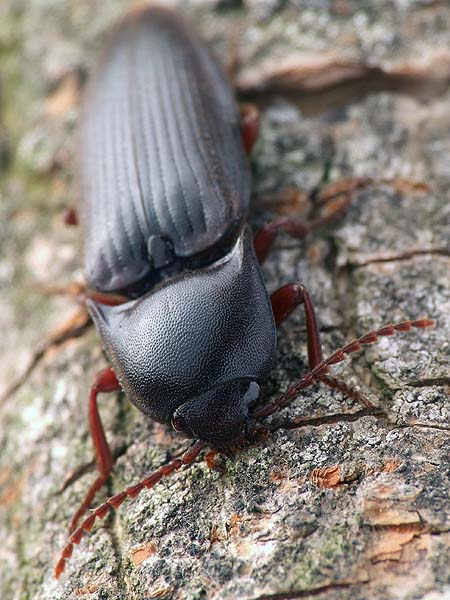
Last year I collected larvae here. As I got home, I found a freshly emerged Pittonotus theseus (Germar, 1817) in the breeding box.
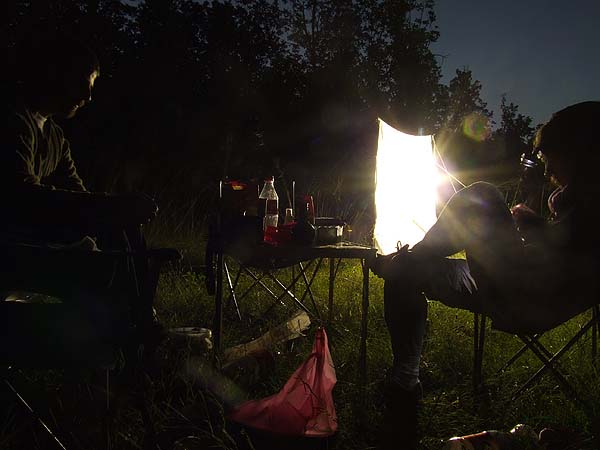
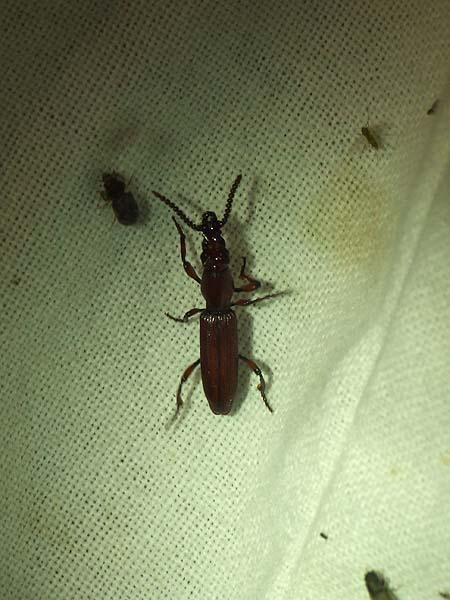
Amorphocephala coronata (Germar, 1817)
– one of the two
straight-snouted weevils occurring in Europe.
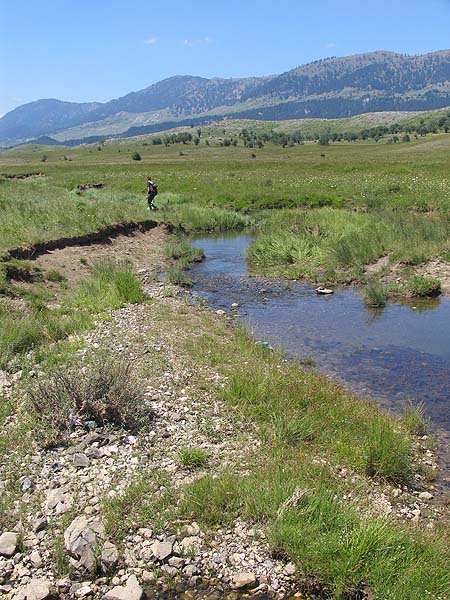
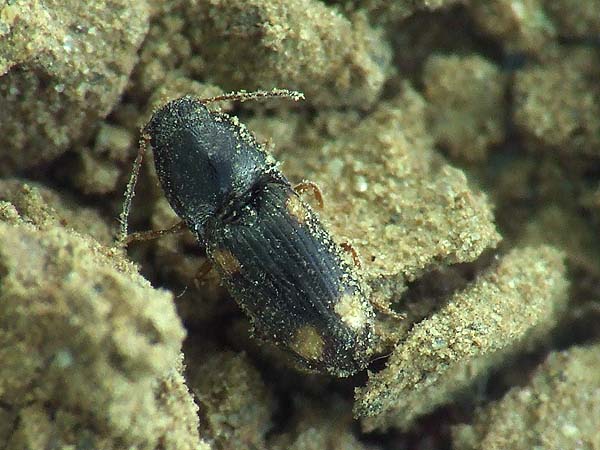
Zorochros
sp. 3mm
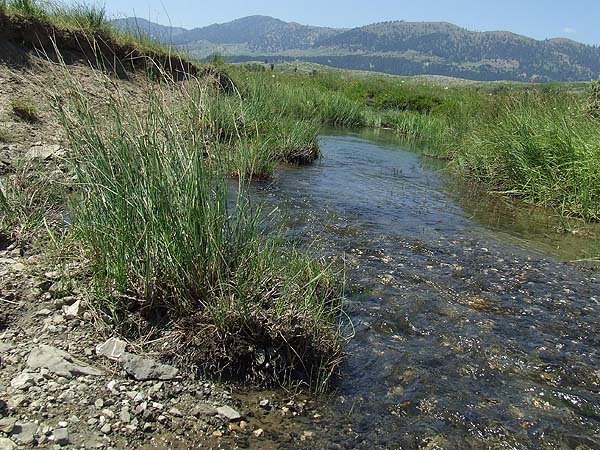
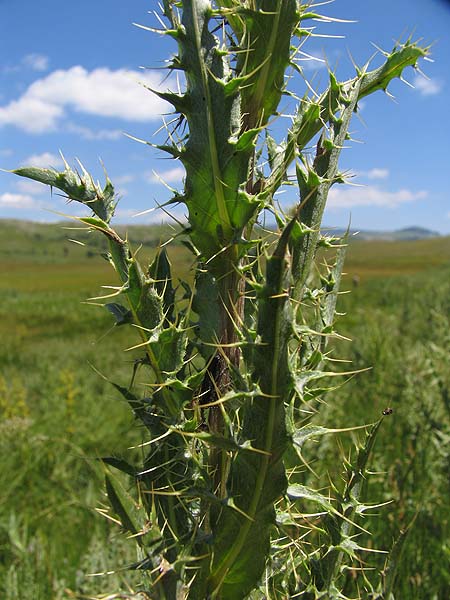

Agapanthia sp.
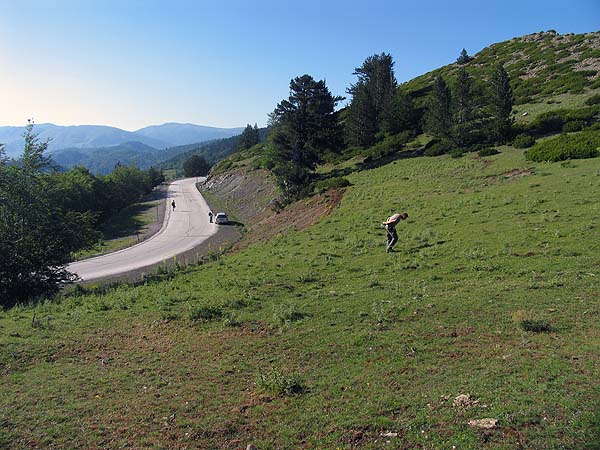

Athous sp.

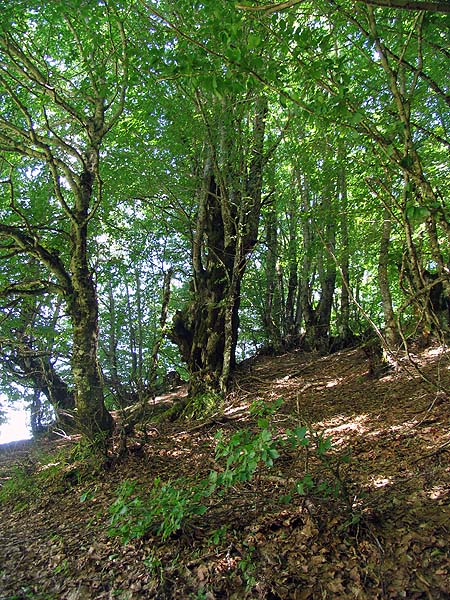
For the night, we visited a nearby beech forest, as
our kind Czech colleagues advised.

Collecting at night was paid off. Several nocturnal
beetles were found this time on the wet fallen leaves.
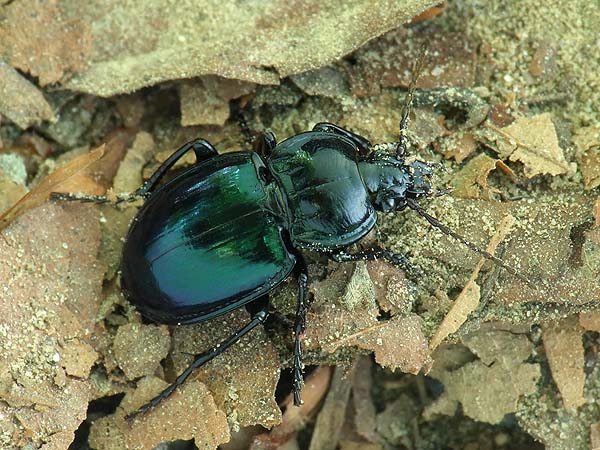
Myas
chalybaeus
(Palliardi, 1825)

Dima macedonica (?) Schimmel,
1993.

Dima macedonica (?) Schimmel,
1993, larvae from the soil.
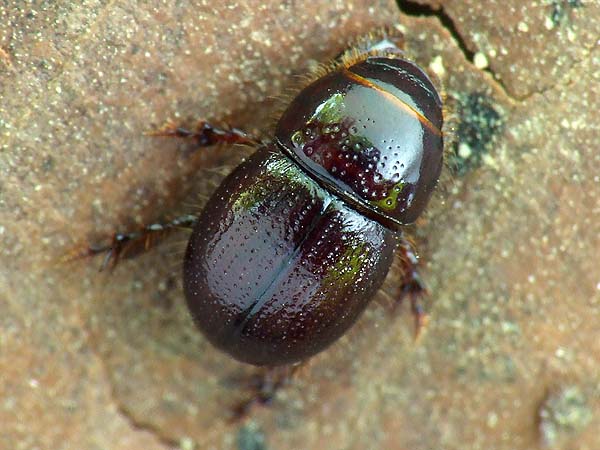
Chaetonyx robustus Schaum,
1862 – a
ground-dwelling scarabaeoid beetle from the family Orphnidae.

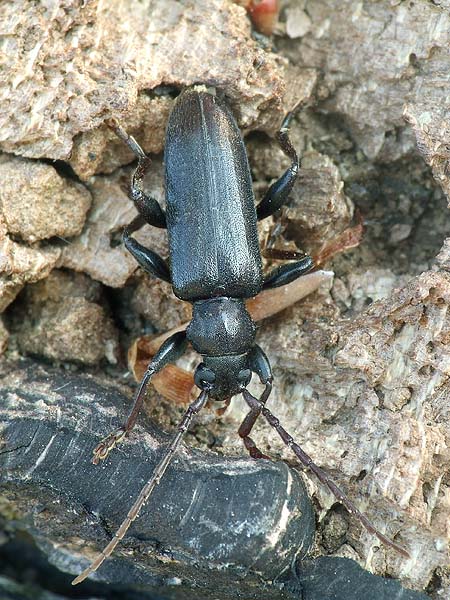
Saphanus piceus (Laicharting, 1784) was still in its pupal chamber in beech logs.
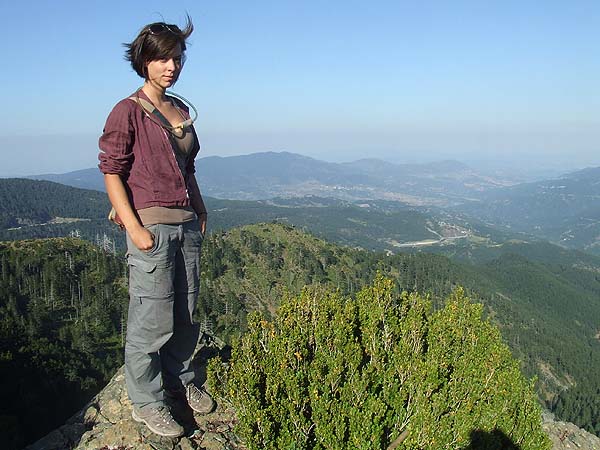
We headed north, to higher levels, and the landscape
was unbelievable.
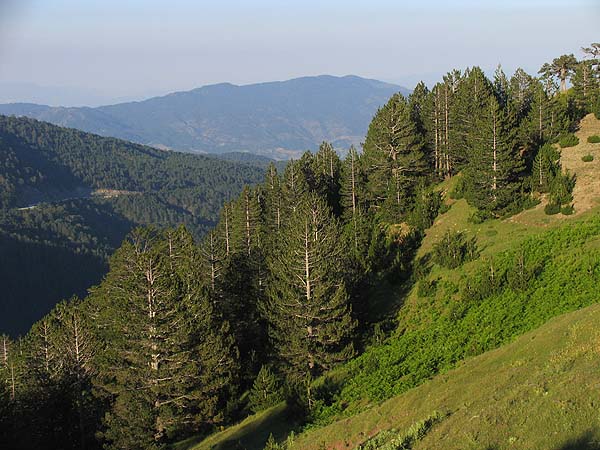
We stopped at some places, and netted the canopy of the
centuries-old
Bosnian pine trees (Pinus heldreichii H. Christ. 1863).
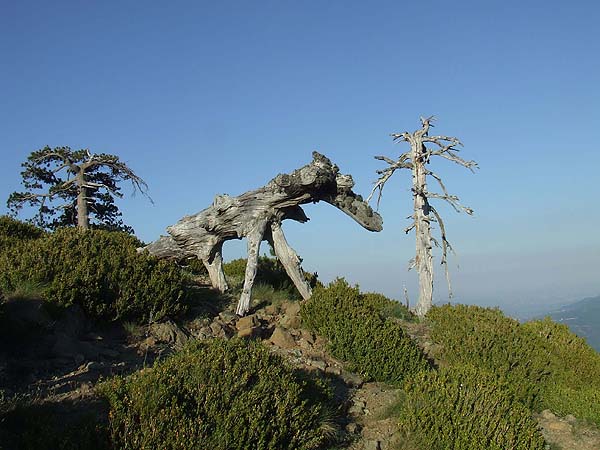

Dicerca
moesta (Fabricius, 1792).
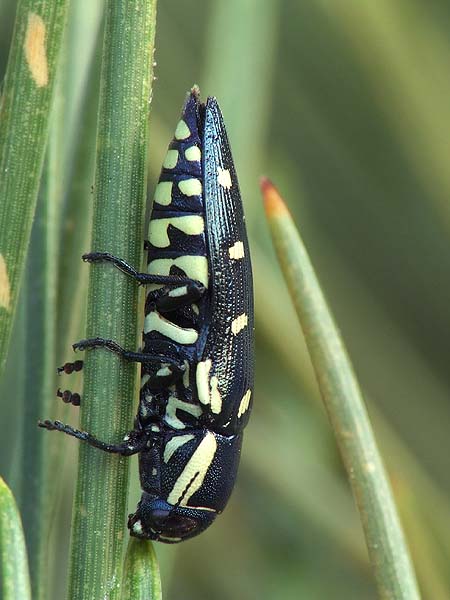
Buprestis
octoguttata Linnaeus, 1758.
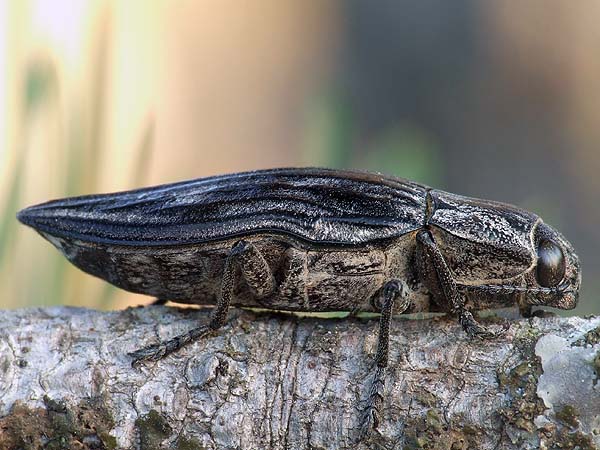
Chalcophora
intermedia (Rey, 1890).
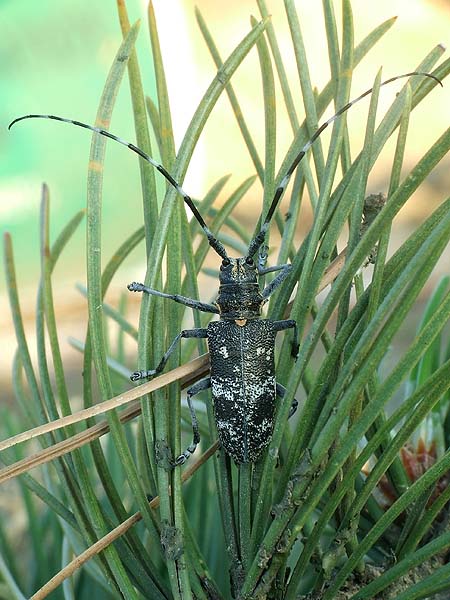
Monochamus
galloprovincialis Olivier, 1795.

Pedostrangalia
pubescens Fabricius, 1787.
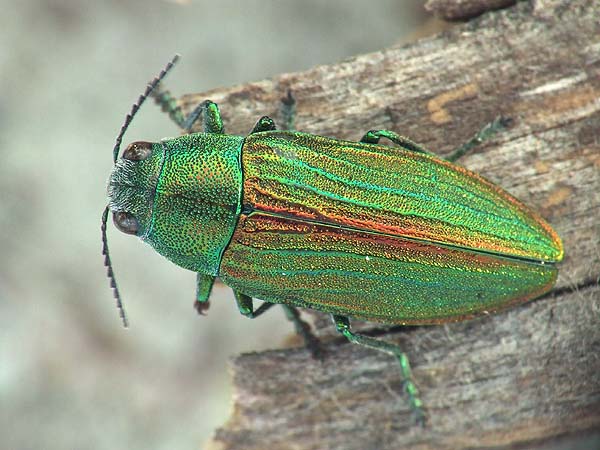
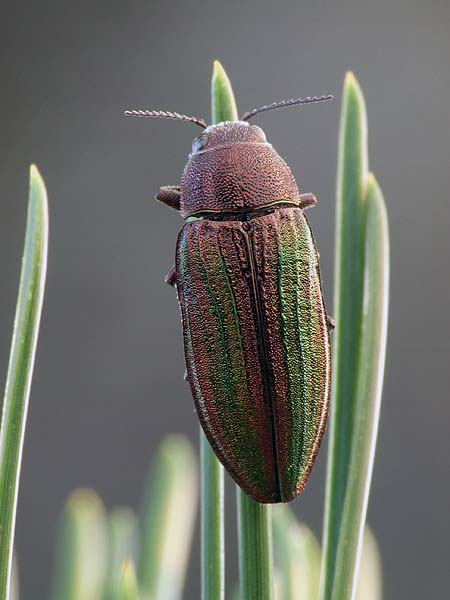
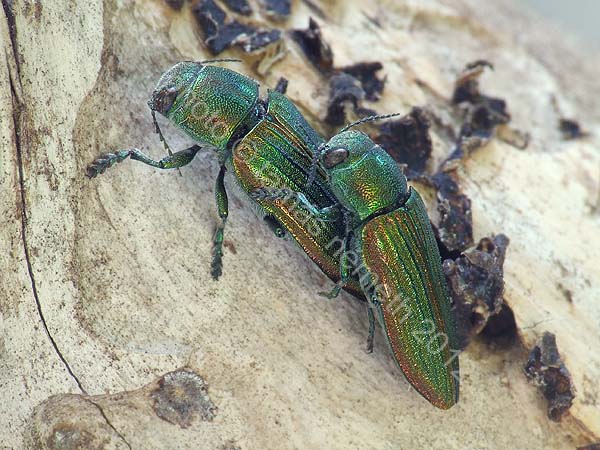
Buprestis
splendens Fabricius, 1775.
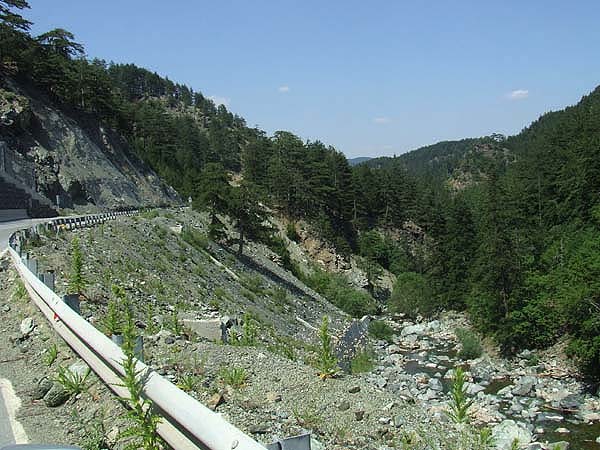
Our road led to the northern Pindos, to find the
locality of another Dima species.
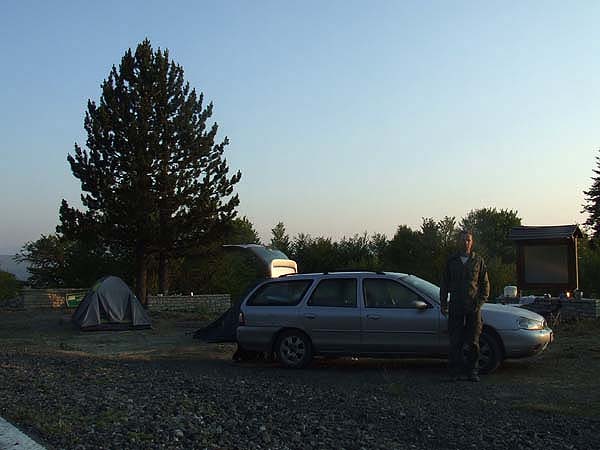
As the sun went down, we started searching. It was worthy.
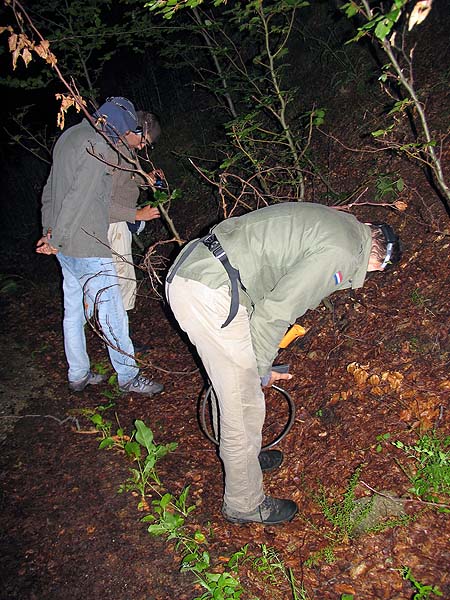
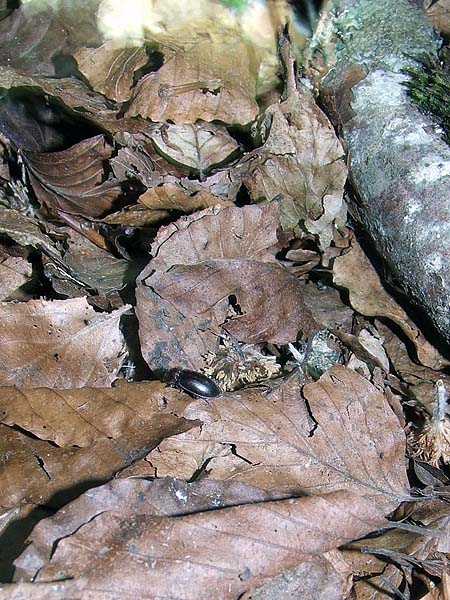
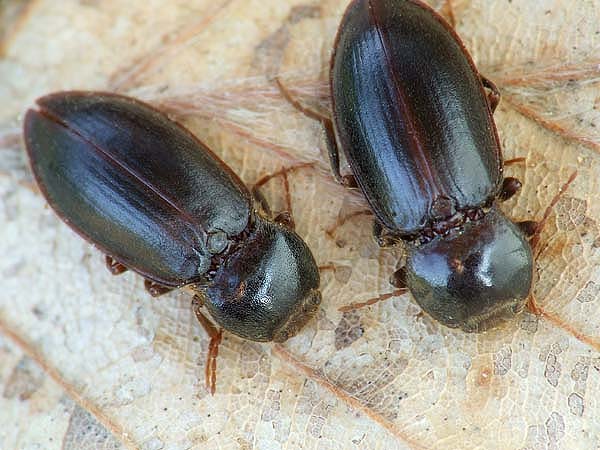
Dima pindosensis
(?) Schimmel
et Platia, 2009.
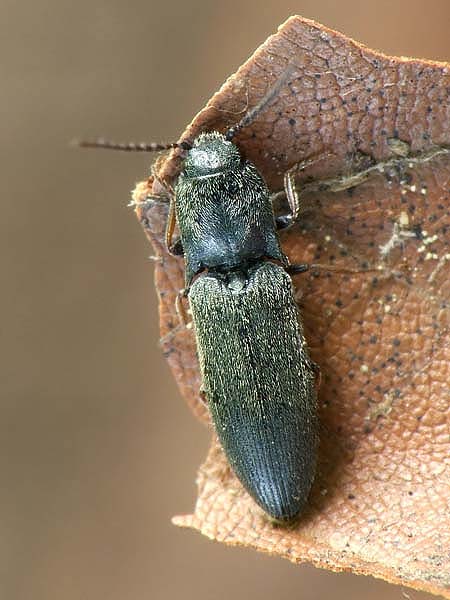
Agriotes sp.


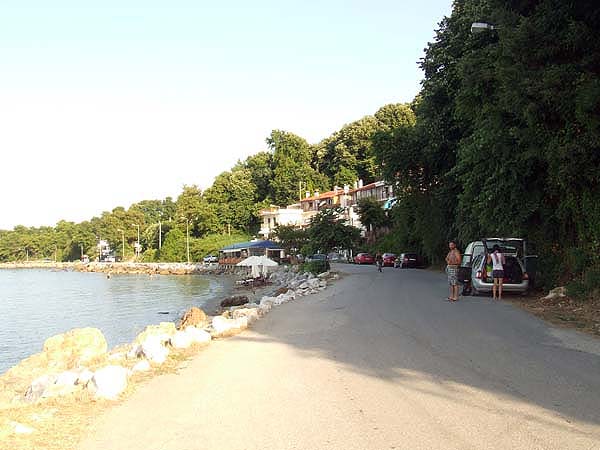
After
seven days, we arrived back to the Ossa Mountain.
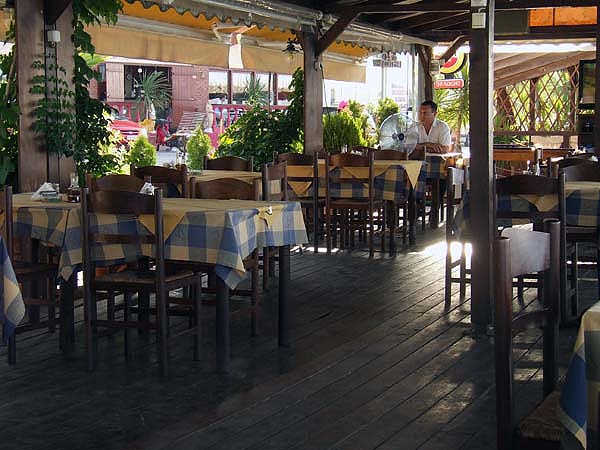

Our
light attracted some beetles again.
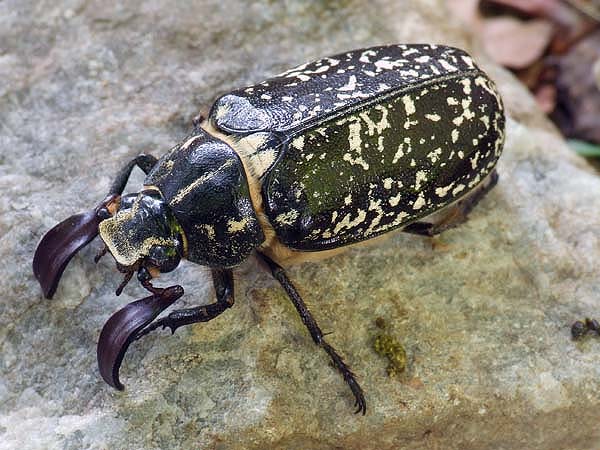
Polyphylla fullo
(Linnaeus, 1758). At light, together with Polyphylla boryi
Brullé, 1832.
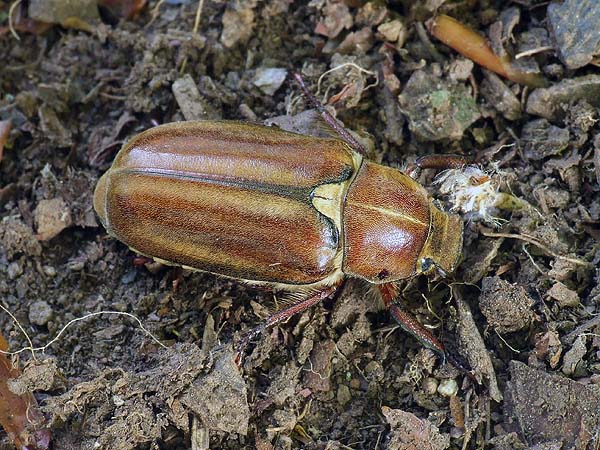
Anoxia matutinalis Laporte
de Castelnau, 1823
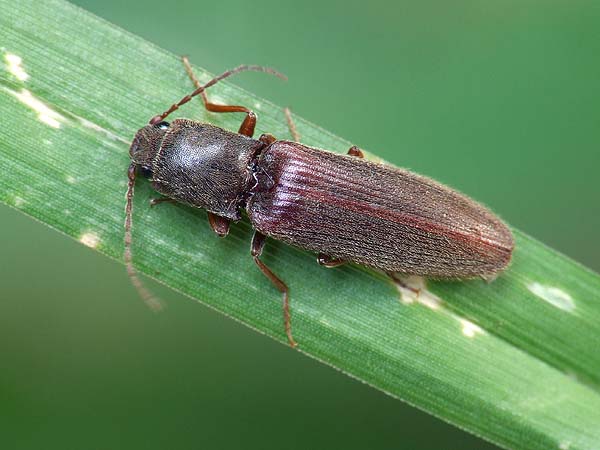
Athous
sp.

Near to our campsite, we spotted several freshly
placed insect traps in the cavities of beech trunks. Actually these
were very makeshift
traps: plastic glasses, full with fruits. We did not touch them, but I
saw only
flies and ants in them.
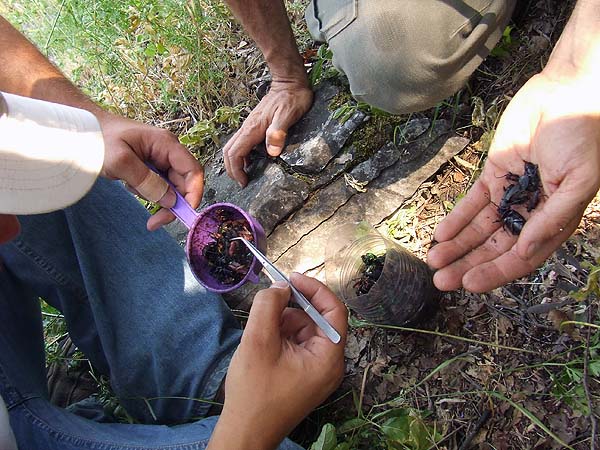
Next morning, we started emptying our traps left in
lower altitude. I found again simple traps of others and whole bananas
nailed to
the living trees, and unfortunately, one of our traps was looted and
refilled
with some unattractive slop. That was a pity. I checked one of their
traps, and
left a notice for them about fair play. But anyway, our traps placed
high in
the canopy were really effective during these seven days. Longhorns: Ropalopus siculus
(Stierlin, 1864), Purpuricenus kaehleri (Linnaeus, 1758),
Purpuricenus
globulicollis Mulsant, 1839, Leioderes
kollari (L.
Redtenbacher, 1849), Stenocorus meridianus (Linnaeus,
1758), Cerambyx welensii Küster,
1846, Cerambyx cerdo Linnaeus, 1758, fruit chafers: Protaetia
aeruginosa (Drury, 1770), Protaetia fieberi
(Kraatz, 1880), Protaetia cuprea obscura (Andersch,
1797), Protaetia mirifica koenigi (Reitter,1894, Cetonia aurata (Linnaeus, 1761), Potosia angustata
(Germar, 1817), Gnorimus
nobilis (Linnaeus, 1758), Gnorimus
variabilis (Linnaeus, 1758), Osmoderma lassallei Baraud & Tauzin, 1991 and
click beetles: Elater ferrugineus Linnaeus,
1758
were in the eight traps, some of them in great numbers.
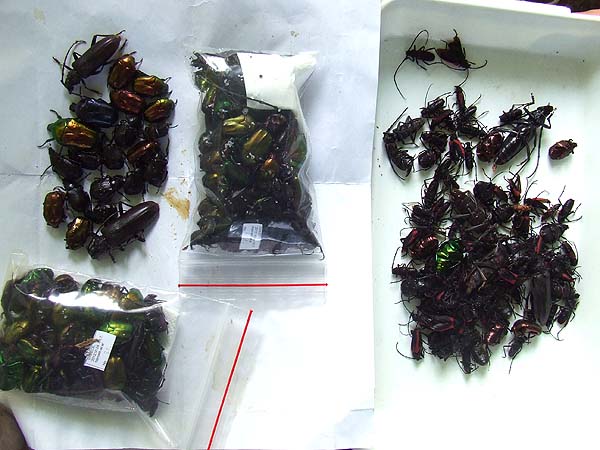

Ropalopus
siculus (Stierlin, 1864).
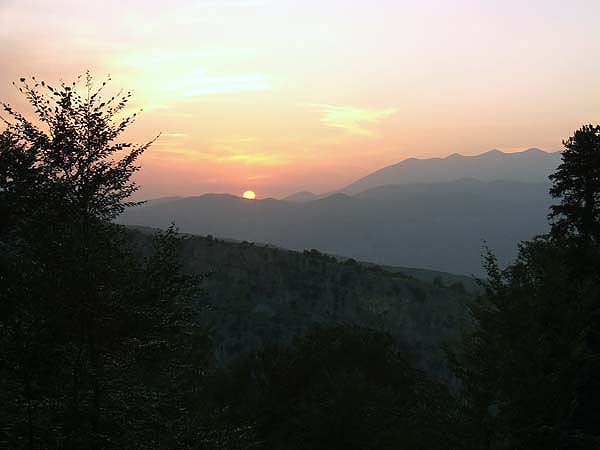
We
caught the moment of the sunset, just as 13 months ago, in the same
place here.

After 13 days, we headed
home. For us, this was the first summertime collecting in